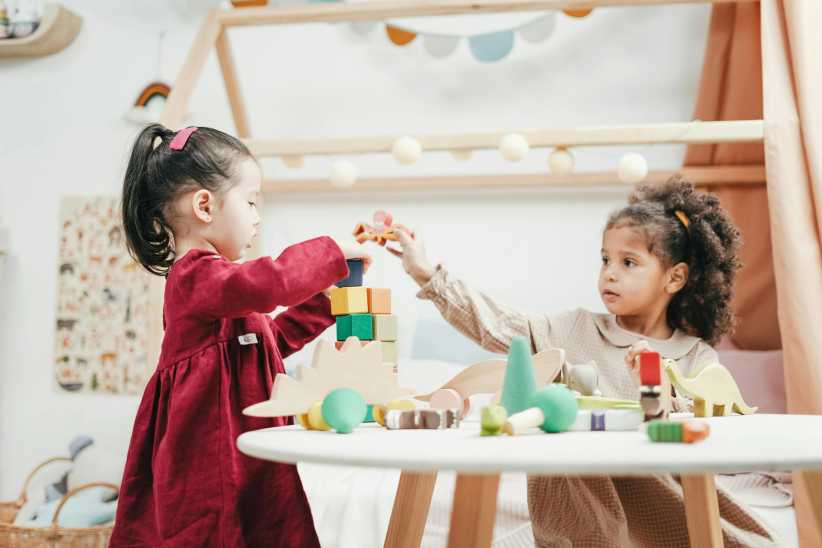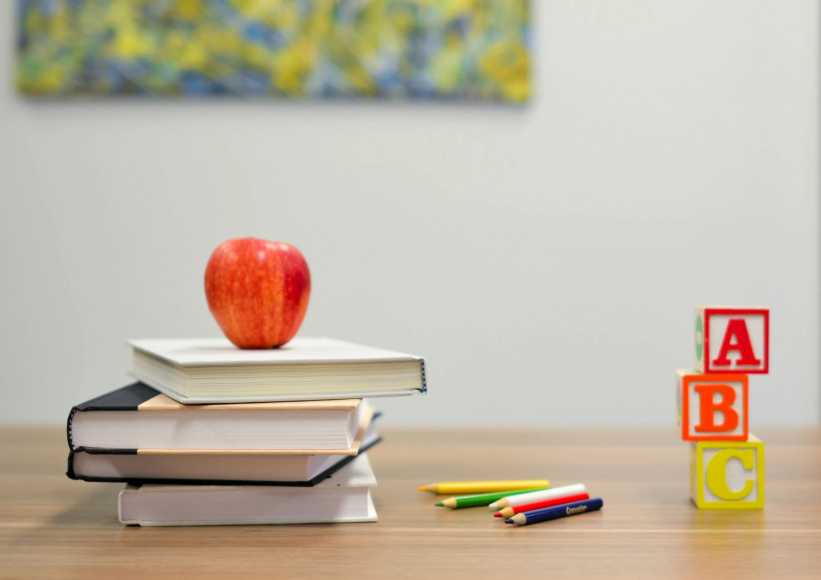 From using detailed projects as a learning tool to placing a higher value on helping New York City’s youth understand the diverse world around them, these are the educational trends that took the city by storm this year.
From using detailed projects as a learning tool to placing a higher value on helping New York City’s youth understand the diverse world around them, these are the educational trends that took the city by storm this year.
Project-Based Learning
Some New York City schools believe that incorporating detailed projects into their curriculums help students to not only better understand what they are learning, but to be able to figure out how to influence the world around them with their new skills. We spoke to three highly-respected local schools to see why they think project-based learning is so valuable.
“Project-based learning takes many definitions and many forms, dependent upon the school and school’s approach. In my experience, the best project based learning always couples content knowledge with application. Students do not simply memorize definitions, but they see those concepts in action. For instance, students may learn the definition of an acid and a base. However, it is not until a student has the ability to create a battery that they may truly understand what distinguishes an acid from a base. Knowledge is only useful if students have the ability to apply it, and a student must participate in all aspects of Bloom’s Taxonomy, the higher domains of learning created by psychologist Dr. Benjamin Bloom in 1956, in order to master a project—remember, understand, apply, analyze, evaluate, and create. Families should ensure that a program claiming to be project based does not leave students without the fundamental knowledge levels outlined by Bloom’s Taxonomy. Students should not be expected simply to figure out key components of a project without an expert guide, namely the instruction of a highly qualified teacher.” –Hadley Ruggles, Head of School at BASIS Independent Brooklyn, basisindependent.com
“Project-based learning immerses students in applying substantial learning of interdisciplinary content and skills to design challenges in which they create high quality products, whether those products primarily incorporate technology, the arts, written or oral communication, social action, any other medium, or a combination of different media. In our school’s first project of the year, students have been creating their own ice cream machines and recipe books by laser cutting their machine designs, building their own electric circuits, learning the science of ice cream (including both temperature and states of matter), and delving into the history of ice innovation to learn about how transporting ice and creating refrigeration has changed our world. Project based learning respects students as doers, creators, and thinkers, setting high expectations not only for acquiring knowledge and skills, but also for applying those understandings as students meet design challenges, explore complex questions with multiple solutions, conduct investigations, and solve real-world problems. In choosing a program, it is helpful for parents to look for immersive interdisciplinary projects, programs that give time and space for projects to take place, time allocated to play, explore, discover, experiment, and learn from both mistakes and successes, an overall respect for the ability of children, and a focus not only on skills, content, and the project product, but also on the personal development of attributes such as meaningful team work, leading by influence, empathy, and self-reflection.” –Dr. Shira Leibowitz, Founding Lower School Director at Portfolio School, portfolio-school.com
“Project-based learning is a process in which students are first introduced to a unit’s context via wonder, then construct knowledge and skills by investigating an engaging question over an extended period of time and producing a response in the form of an artifact, and finally share out understanding to an audience and reflect upon growth to chart further progression. It is a practice that engages student curiosity, challenges them to solve relevant problems, immerses them into an authentic learning environment, and encourages development of 21st Century skills so that their passions can be applied in future real world contexts. It is a way of teaching that puts what we know in the service of what we are able to do with our knowledge and via agency refocuses student attention onto the very process of learning. Project-based learning nurtures deep learning, those ‘ah-ha moments’ when students understand how what they have learned applies to the world outside the classroom and when they understand themselves as learners and change-makers.” –Carolyn Wilson, Director of Education at AltSchool, altschool.com
Global Education
In our ever-changing world, it is important for children to learn more about how they can become influencers and create change, and interact with others from different nationalities, backgrounds, and religions. We asked the following three local schools about how they incorporate Global Education into their curriculums and why these programs are vital for children in the 21st Century.
“A Global Education recognizes that, more than ever, future generations will need to have the flexibility of thinking, adaptability and confidence to meet these opportunities and challenges in unpredictable and often international contexts. One of the main goals of an International Baccalaureate education is to help students to become aware and engaged citizens, willing to use their knowledge and skills to try to make a positive difference at a local, national, or international level. The challenge for students and teachers alike is therefore to look for opportunities to take action to improve situations they learn about in their studies. Volunteering and fundraising to support charities is one practical thing we can all do, and the British International School has decided that in order to give this additional resonance for the students, the main charities our school supports would all be linked to the United Nations Rights of the Child. These charities work to ensure children have access to clean water and educational and recreational opportunities. An example of global education at work in our school was when a grade 2 student who returned visited Flint, MI, asked to speak with his Head of House about what we could do as a school to support getting access to clean water there. The ability to develop strong and genuine relations- economic, political and personal- with people from different backgrounds, nationalities, or beliefs is going to be even more critical in the future and having the opportunity to learn about, discuss and begin to understand and respect such differences at school is invaluable.” –Jason Morrow, Headmaster of British International School, bis-ny.org
“Global education is a way of moving through a school day, always aware that there are fascinating people and cultures far beyond our neighborhood, state, or country. A global education is not only evident in a school’s classrooms, hallway art, and library collection, but also in the nationalities and backgrounds of the adults who work in the school. It is a respect and healthy curiosity about how others may live differently and similarly to the students in the school. At The New York International School, 50 percent of our faculty grew up in countries outside the United States, and our library holds books in two of the languages that we teach, Mandarin and Spanish. We have eleven schools in a global network with which we can communicate, collaborate, and share resources. A global education is perhaps the most important gift a child can receive in the 21st Century because it reduces bias, expands compassion, reduces fear, and provides students with the ability to thrive in a variety of cultures. It’s nearly impossible to disrespect a culture in which a student has made a friend.” –Shelley Borror Jackson, Head of School at New York International School, nyis.org
“We consider global education an essential part of preparing students for today’s interconnected world. It equips children with the knowledge, experiences, and skills needed to succeed in the global marketplace and to thrive anywhere in the world. Parents seeking the benefits of global education can look for a school that begins teaching these essential skills early and continues to do so in age-appropriate ways. Our International Baccalaureate [curriculum] educates students to be globally minded critical thinkers, who are sensitive to other cultures and perspectives, as well as fluent in several languages, including Spanish and Mandarin, and our students participate in an annual exchange program with other Dwight campuses around the world. Students at every level engage in cross-campus curricular and creative collaborations, and we feel that this is an important thing for parents to look for in a global education program. Children can benefit from the emphasis that the International Baccalaureate places on inquiry and learning through the study of global contexts and work with other students across time zones to solve math problems, create art, and collaborate on other stimulating projects.” –Dr. Blake Spahn, Vice Chancellor at Dwight School, dwight.edu
“When today’s children become adults, they will be living in a world that is very tightly connected through technology. Businesses and professions are becoming international, and being able to develop relationships with people from around the globe will be essential. Understanding peers from other countries and speaking with them in their own languages will be an advantage. In addition to the strength of bilingualism in international relations, there is evidence that understanding other languages and cultures creates a stronger and more flexible mind. Avenues: The World School believes the children of coming generations will need the skills to establish relationships of trust with other citizens around the planet. Our program in global education is designed to give students the skills and experience to achieve this goal and our mission is to graduate students who are both knowledgeable of the world and able to speak a second language.” –Ty Tingley, Chief Academic Officer at Avenues: The World School, avenues.org
[gravityform id=”13″ title=”false” description=”false” ajax=”true”]
STEM Programs
STEM (or STEAM) programs have been quickly becoming popular in New York City’s schools, valuing science, technology, engineering, art and design, and mathematics classes as a top priority for young students. We talked to two schools that use STEM and STEAM programs to see why they think it is such a valuable part of a child’s education.
“STEAM programs are an opportunity for educators to leverage their passions to transform traditional academic studies units into true cross-curricular experiences for their students. Grade 3 students at Trevor Day School study the Hudson River throughout the year, viewing the river as a ‘commons,’ or a recurring theme infused throughout student life at Trevor Day School. Students learn about the parts of the river, the geography of rivers, map skills, and the river as a system. They also learn about the river as a habitat for various animals, food chains, and the importance of water quality. Students study and create models of tools used by the Native Americans, learning about cordage, tension, and simple machines. Students visited the river on several occasions to record their observations. Art teachers accompanied the students on their field trips to introduce sketching and water colors. The math specialist helped the students work with data, such as water quality, measurements, and other data collected over time. Students documented their learning throughout the year with digital dictionaries created on the iPads. STEAM programs provide the opportunity for students to develop critical thinking skills and foster deeper learning while increasing science literacy. A strong STEAM program encourages students to work collaboratively, communicate effectively, and promotes student inquiry and creative problem solving.” –Cathy Cheo-Isaacs, Lower School Educational Technologist at Trevor Day School, trevor.org
“The Cathedral School recognizes that today’s students need to be equipped with the skill sets necessary to be successful in tomorrow’s global world and workplace. We believe strongly that this includes cultural competency, self-confidence, and the ability to be articulate. We also know that our students must possess an ability to be critical thinkers that can collaborate with others to solve problems creatively. STEM programs, or STEAM as we call it, speak to our philosophy that students in all grades should be challenged to work with each other to solve problems, make mistakes, and think critically in cross-curricular, project based studies. We believe that science, technology, engineering, arts, and math should be taught collaboratively and whenever possible in a project based environment. Each year the two Cathedral School STEAM coordinators identify aspects of the curriculum in grades K-8 that lend themselves to cross curricular, project based studies. The coordinators help the various teachers schedule and organize projects that allow the students to learn the traditional curriculum in a number of subjects in a progressive collaborative manner. Our STEAM program and projects are dynamic and reflect problem solving in multiple disciplines. We believe that critical thinking, problem solving, and the confidence to learn from mistakes is the best practice. What parents should look for in a strong program is one that has adapted its traditional approach to academics to a more project based, problem solving, cross curricular approach. A strong program uses technologies like 3-D printing and coding to enhance and support the curriculum rather than to simply showcase the latest technologies with no context.” –Peter L. Maas, Chief Operating and Financial Officer at The Cathedral School, cathedralnyc.org
Immersion Schools
Learning a second language is something that students can find at most schools, but immersion programs take language to another level. We spoke to two of the city’s most prestigious immersion schools to learn more about their unique perspective on language education.
“We teach English daily at our school, and we primarily teach students important subjects like math, science, and social studies in English. But every other week, we go deeper into math, science, and social studies in Mandarin, so that students are deepening their ability to think in the language. We have grade 5 students who can solve algebra problems, write essays, and create scientific formulas in Chinese. This helps to develop their critical thinking skills as well as their language development. When we test our students on cognitive flexibility, we find the longer children are in immersion programs, the more gifted they are. At the end of an immersion school program, your child is not only proficient in a second language and tests better than average students in English, but they are thinking creatively in a way that makes their brains smarter.” –Sharon Huang, Founder of HudsonWay Immersion School, hwis.org
“A couple of misconceptions parents have about immersion programs are that a child or family has to already have second language experience, that children will fall behind in English language areas, and that parents will not be able to support their child’s learning if they don’t speak the language. English and immersion teachers collaborate extensively to create and nurture the social, emotional, and academic growth of their students. Teachers share the responsibility for teaching the content and curriculum and communicate with each other regularly about student progress. Language is taught through content in all subject areas—students are not being taught the language but are being taught ‘in’ the language. The teachers use games, songs, visuals, and body language, and gestures to make the language comprehensible. This is what helps students retain what they learn in class, even when they have no prior language experience or do not have parents that speak the language at home.” –Nancy Schulman, Head of the Early Learning Center at Avenues: The World School, avenues.org






















